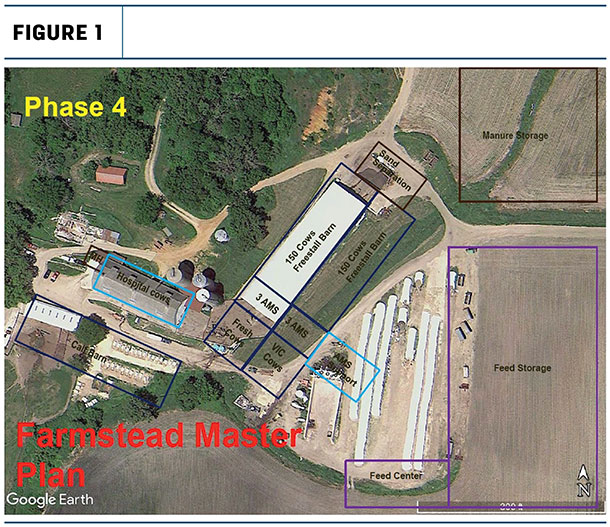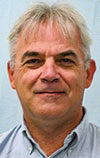To read this article in French, click here.
In urban planning, cities have a master plan to develop their land use for decades ahead. Certain areas are reserved for housing, industry, parks and shopping areas. New roads are located before they are built. Urban planners have a vision of how to develop the city and create a well-functioning and attractive place to live. Urban planning gives a path on how to get there.
Dairy farms are the same. Greenfield dairy farmsteads usually have a farmstead master plan because they are starting on a new piece of land and a blank canvas. However, many dairy farmsteads don’t start with a blank canvas. The dairy farm started 100 to 150 years ago with great-great grandfather’s vision and developed over the succeeding generations. Each generation changed and grew the dairy herd according to the current and developing technology of the day. Now, the current generation wants to expand or modernize the dairy, adapting the current technology, including automatic milking systems.
Too many times, a new cow barn or manure storage is dropped onto a location without any thought of what’s next. Many times, a farmer adds a cow barn saying, “This barn will be all the cows I ever want.” Ten years later, the next generation wants to expand on past success. But, perhaps that last barn or most recent manure storage addition is literally in the way of future changes, does not allow easy expansion, needs to be torn down for new construction, or requires them to start fresh on a new site.
Several of my mentors considered the dairy farmstead a tool that allowed the dairy farmer to implement their own management plan. The dairy management plan has several key development zones, as shown in Figure 1. The zones include:

- Animal management and housing system
- Milking management system
- Feed management storage system
- Waste management storage system
The individual development zones are identified for current development or future expansion. The plan identifies the phased projects that can be developed over time.
Developing a farmstead master plan takes time and effort. It is best done as a team effort with key people in the management team including:
- Owner
- Herd managers
- Trusted consultants
- Veterinarian
- Nutritionist
- Designer
- Lender
- Builder
With your management team around the table, the management plan can be developed with all team members’ input.
A farmstead master plan is a set of drawings and documents that describes the site:
- Physical and natural boundaries
- Current buildings
- Future improvements
The farmstead master plan is used to communicate your ideas to all interested parties as part of your business plan. The plan can identify opportunities of the site, such as the space needed for new construction of barns, manure storage and feed storage area. It can also identify limitations, including physical boundaries such as space, property lines, roads, topography and drainage patterns. The farmstead master plan can help determine the maximum size of dairy possible on the site and the future direction for current and next generations.
Decisions are made to develop the farmstead master plan following basic design and planning principles including:
- Implement the dairy animal management plan
- Effectively utilize and optimize farmstead resources
- Provide healthy and safe working conditions and labor efficiency
- Consider flow of cows, feed, manure and people
- Provide biosecurity with separate clean and manure traffic routes
- Protect the environment
- Adapt technology
With a farmstead master plan, decisions on where to place the next barn, manure storage or heifer barn can be looked at critically. The animal housing barns, milking center, feed center and waste handling systems are located and sized on the farmstead master plan to complement each other to create an efficient dairy system. Developing a farmstead master plan can help this generation plan for not only the next step but allow future generations or new owners to continue to develop the dairy farmstead when they take over the farm. Decisions made now can either allow additional future changes or hinder future development of the site. A farmstead master plan adds to the farm’s value and improves profitability. With good planning, investments made now will continue to be of value in the future and provide a smoother transition as the plan evolves.
The farmstead master plan can and will change over time. A plan developed 10 years ago will look different than one developed now because the dairy business has changed over that time. The management plan and facilities used evolves, continually changing according to each generation’s management plan and needs.
Whatever new construction you have planned, a farmstead master plan can help place them in correct locations to allow for additional changes in the future. Make your decisions with the dairy’s team of trusted consultants, and think past this first step. Think big. A vision for your future should be always a bit beyond reach. It might be difficult now to look past this step and envision any future changes because they can look impossible. But, consider what your great grandfather’s farm looked like 100 years ago, what he thought it might look like in the future, and you may see that your farmstead will also look different in another 100 years.







